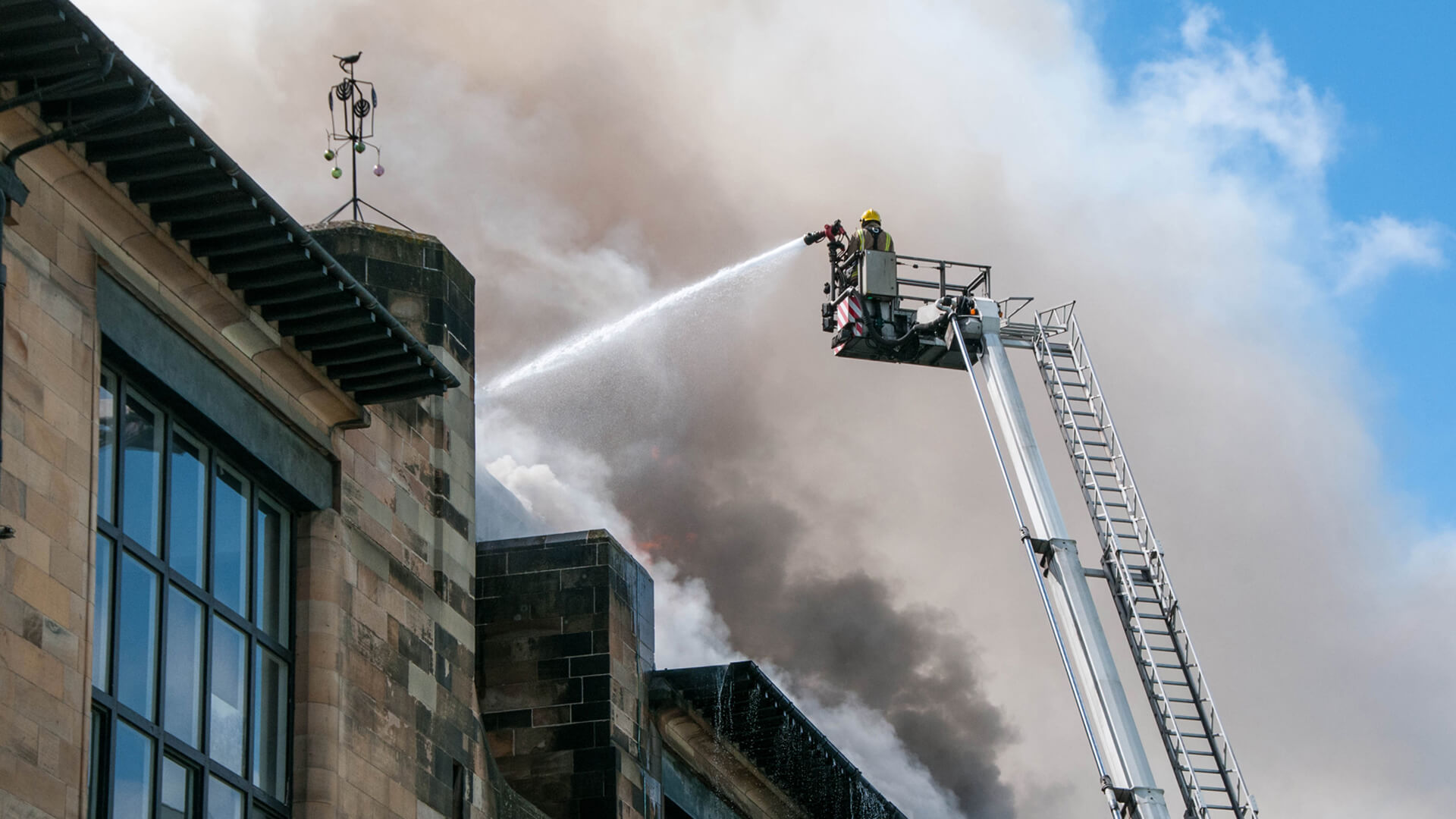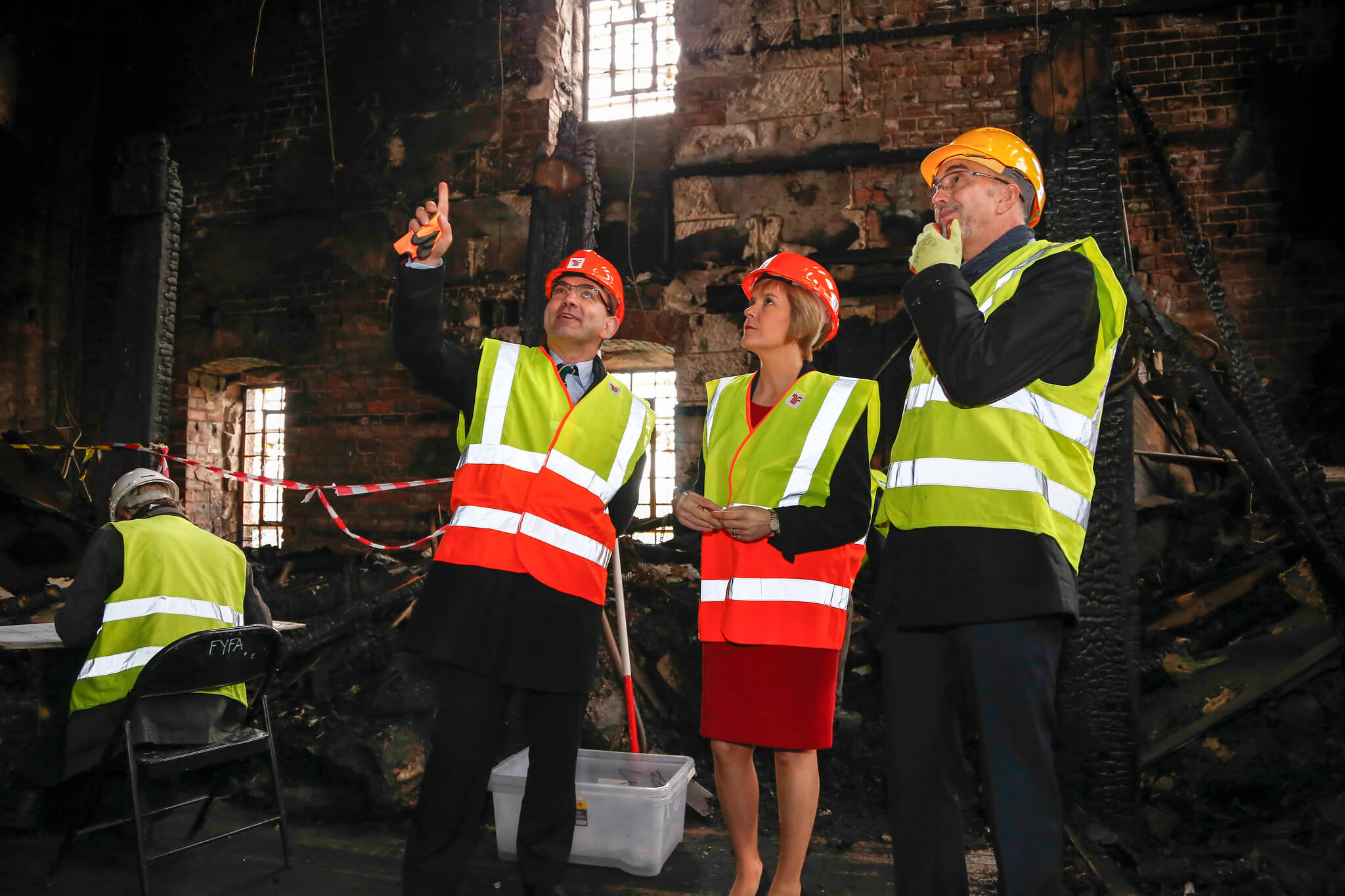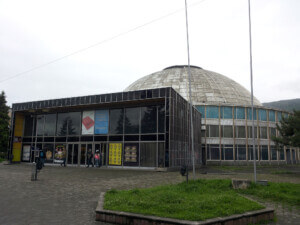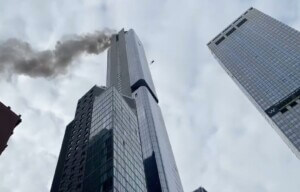In early October of last year, daily Scottish newspaper The Herald published a story with the tantalizing headline: “Glasgow School of Art Fire: Is the truth behind the blaze about to be revealed?”
Several months later—and nearly four years after the devastating fire in question tore through the Glasgow School of Art (GSA)’s famed Mackintosh Building—there is now an official response to The Herald’s leading query. The answer is a frustrating “probably not.”
Yesterday, Scottish Fire and Rescue (SFRS) published its anticipated report on the June 2018 blaze that destroyed the Mackintosh Building, a Category A-listed British Art Nouveau-style landmark designed by Charles Rennie Mackintosh in phases from 1896 through 1906. At the time of the fire, the building was particularly vulnerable as it was nearing the end of a careful, nearly $50 million restoration effort led by Scottish firm Page/Park Architects to repair damage incurred during a previous fire that ripped through the historic building in May 2014.
Per the SFRS report, answers to “how” and “why” the second catastrophic fire occurred will likely never be known as the official cause remains classified as “undetermined.” Although it did not result in any serious injuries or deaths, the blaze was so ferocious and so widespread (it also damaged neighboring buildings) that investigators were left unable to make any conclusive determinations. More than 120 firefighters responded to the blaze with firefighting operations continuing for 10 days.

As reported by the BBC, residents and businesses along Glasgow’s Sauchiehall Street continue to grapple with the devastating impact of the fire, which has only been compounded by the COVID-19 pandemic.
Per the Guardian, the coordinated effort to determine a definitive cause of the 2018 inferno at the GSA ranks as the “most complex and resource-intensive” in the history of the SFRS. Spanning 172 weeks, the investigation involved extensive excavation work and the forensic examination of recovered debris, the examination of CCTV and photographic photograph footage, and the analysis of key witness testimonies.
Explained Ross Haggart, deputy chief officer at the SFRS, in an official statement:
“Due to the nature of the ongoing restoration and construction works combined with other factors such as the air supply into the building, the fire was unfortunately able to take hold, spread and ultimately cause catastrophic damage.
This presented a number of challenges to our investigation, namely working within a structurally dangerous site to physically examine hundreds of tonnes of debris, which was up to four metres in height and heavily compacted.
We scrutinised every aspect of this fire to ensure our investigation was as robust and thorough as possible.
Unfortunately, almost everything within the building was severely damaged or consumed in the fire and that included any potential items of evidence that could have provided those answers.”
Haggart concluded: “We were unable to find sufficient evidence to support any credible origin and it has not been possible to establish a definitive cause. However we have made a number of recommendations including the introduction of new mechanisms to enhance information sharing around ongoing construction projects within Scotland to ensure the safety of our firefighters and our communities.”
Although the SFRS noted that it could not fully rule out electrical failure, accidental ignition, or willful fire-raising (a Scottish offense similar to arson) as potential causes, the fact the years-long inquiry ended, like it started, with a giant question mark, prompting dismay and disappointment from GSA and governmental officials like.

Paul Sweeney, a parliamentary member of the Scottish Labour and Co-operative Party representing Glasgow and board member of the Glasgow City Heritage Trust, has been particularly vocal in expressing his frustrations regarding both the results of the inquiry and the sluggish pace of rebuilding efforts. Speaking to the Guardian, he lamented that the SRFS report was “hardly worth the wait and tells us nothing we couldn’t have deduced from a cursory glance at aerial photographs.”
“This is the single biggest disaster to hit Scotland’s built heritage in a century and lack of pace and grip shown by the authorities from the School of Art itself to the Scottish government has been nothing short of disgraceful,” he said. “Three years on and it is still not clear when are contracts going to be awarded, is it financed, will the insurance pay out, are we appointing people to get this back on track?
The beleaguered Glasgow School of Art responded to the release of the SFRS report with a joint statement from director Penny Macbeth and interim chair Kristen Bennie that expressed gratitude toward investigators, disappointment in the failure to identify an exact cause, and optimism for the future ahead. It reads:
“Firstly, we would like to thank the Scottish Fire and Rescue Service for their meticulous approach to this incredibly complex investigation, and for their steadfast commitment to establishing the facts and the cause of the 2018 fire. It has been a very difficult time for the city, and in particular our closest neighbours, for students, staff and the wider heritage sector all of whom have been impacted in myriad ways by both Mackintosh Building fires.
“While the SFRS Fire Investigation Report is detailed and comprehensive, we share the frustration that many will feel that the exact cause of the fire has not been identified. Taking time to study and consider the report thoroughly, in particular the recommendations, we will now undertake and share a lessons learned exercise on all aspects of the restoration to inform future construction projects.
“The SFRS Fire Investigation Report is an important milestone allowing us to progress the Mackintosh Project as outlined last October in the Strategic Outline Business Case. We are committed to the faithful reinstatement of the Mackintosh Building within the practical constraints of the regulatory environment, as an integral part of the GSA, as a catalyst and key driver for the social and economic revival of Garnethill and Glasgow and as an exemplar of sustainability for heritage buildings.”
Referring to the Mackintosh Building as a “true Scottish icon and one of the world’s architectural treasures,” Christina Grainger, president of the Royal Incorporation of Architects in Scotland, said in a statement shared with The Scotsman that “we’d like to see the Mackintosh Building project create opportunities for today’s emerging Scottish architects and craftspeople. Hopefully, the report will allow those efforts to move forward, and we’re ready to assist Glasgow School of Art in finding the right solution to this hugely-important building.”











